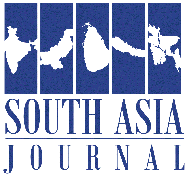
In the complex geopolitical theatre of South Asia, one truth has become increasingly evident: sustainable peace requires multilateralism. Yet, India continues to reject this foundational principle, positioning itself as a unilateralist actor in a deeply interconnected region. From cross-border tensions to water disputes, trade roadblocks, and ceasefire violations, India’s aversion to collective engagement threatens not just bilateral progress but regional stability.
The recent post-Pahalgam standoff provided yet another reminder. As global actors urged calm, and the region teetered on the brink, former U.S. President Donald Trump’s behind-the-scenes mediation helped defuse a potentially explosive situation. Yet, India refused to acknowledge this intervention. Instead, it doubled down on its decades-old dogma: no third-party mediation. In doing so, India sent a clear signal — it would rather preserve its version of status quo than admit diplomacy, even from allies, played a role in restoring calm.
India’s rejection of multilateralism is not new. But it is increasingly untenable. The sheer interconnectedness of regional issues — terrorism, trade, energy, water, and climate — demands shared frameworks and mutual accountability. India’s insistence on bilateralism may sound principled in New Delhi, but it translates into diplomatic stagnation across the region.
Nowhere is this clearer than in the Kashmir dispute. The United Nations has long recognized it as an international conflict, with multiple resolutions calling for third-party mediation and a plebiscite. Pakistan has consistently welcomed global involvement, including from the UN, the U.S., and other neutral powers. India, however, has blocked every attempt, reducing all avenues of resolution to bilateral paralysis. The result? A frozen conflict punctuated by violence and propaganda, with no off-ramp in sight.
New Delhi’s position reveals a deeper insecurity. Multilateralism, by definition, introduces transparency, accountability, and shared ownership. India fears that international mediation could expose inconvenient truths — about its domestic conduct, its record in Indian-occupied Jammu and Kashmir, and its growing use of coercive state power against minorities and dissenters. Thus, India prefers a closed room, where it can control the script, limit the audience, and manage the optics.
This approach, however, is no longer sustainable. The region is not what it was in 1947, 1971, or even 1999. South Asia today is a multipolar, digitally connected, and economically entangled landscape. Climate crises don’t respect borders, nor do cyber threats, pandemics, or the consequences of failed diplomacy. By rejecting regional cooperation mechanisms and shunning multilateral platforms, India is not safeguarding sovereignty — it is sabotaging shared progress.
The logic that India uses to justify its multilateral phobia is rooted in nationalist rhetoric. Any external involvement is framed as interference. Any mediation is labeled an insult to sovereignty. But this is a dangerous misreading of international norms. Sovereignty is not a shield to hide behind — it is a responsibility to engage constructively. When India’s refusal to engage leaves millions in conflict zones exposed to military excess, humanitarian crises, and economic isolation, it’s not sovereignty — it’s stubbornness masquerading as principle.
Take the example of SAARC. As the most significant regional forum designed for South Asian cooperation, it has effectively been neutralized due to India’s refusal to attend or cooperate meaningfully. Regional connectivity projects have stalled, intra-regional trade remains among the lowest in the world, and disaster response mechanisms have weakened. India may claim leadership, but it is presiding over paralysis.
Trump’s behind-the-scenes diplomacy in 2023, which averted a major escalation, should have been a moment of introspection for India. Instead, it was erased from the narrative, as if acknowledging the role of others would diminish New Delhi’s own stature. But diplomacy is not about chest-thumping; it is about preventing unnecessary wars. When a state refuses to recognize contributions that save lives and reduce tensions, it reveals a preference for conflict over compromise.
Pakistan, in contrast, has repeatedly opened its doors to multilateral diplomacy. Whether through backchannel diplomacy, third-party investigations, or international media engagement, Islamabad has shown a willingness to subject its claims to global scrutiny. Even in the face of provocations, it has kept its side of peace corridors like Kartarpur open, appealed to neutral institutions for investigation into incidents, and welcomed international observers.
India’s refusal to engage multilaterally has not gone unnoticed. Each time New Delhi closes the door on cooperation, its neighbors grow closer to one another. China, Turkey, and Gulf nations have deepened their engagement with Pakistan. Even traditional Indian allies have shown increasing unease at its rigid approach to conflict resolution.
India must decide: does it want to be a partner in peace or a roadblock to resolution? Reclaiming influence in South Asia does not require rejection of multilateralism — it requires leadership that is humble, inclusive, and cooperative. Until then, the multilateral mirage will continue to haunt not just diplomacy, but the dreams of peace in South Asia.
